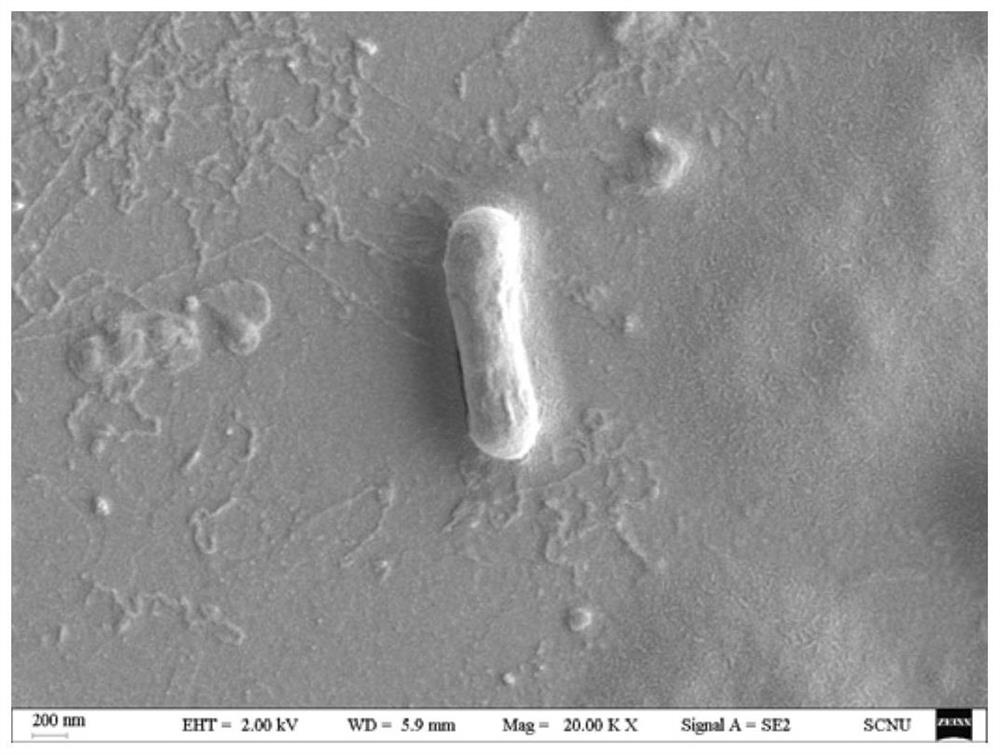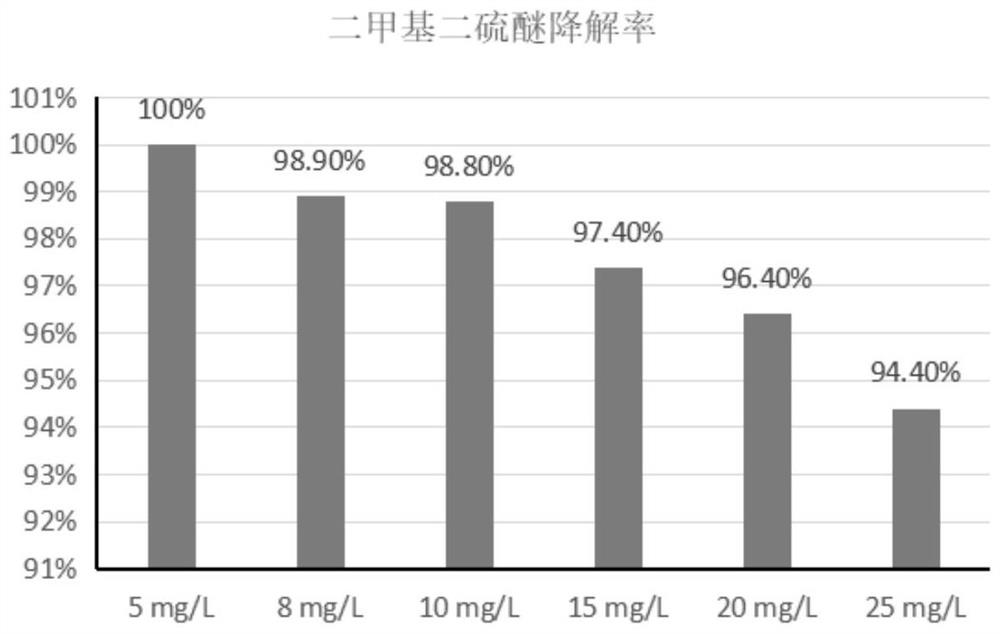Bacillus isothermal layer GDUTAN16 for degrading dimethyl disulfide and application of bacillus isothermal layer GDUTAN16
A technology of dimethyl disulfide and bacillus, which is applied in the field of microbial degradation, can solve the problems such as no reports of other different strains, no stratospheric bacillus that can degrade dimethyl disulfide, etc., achieve significant degradation effect
- Summary
- Abstract
- Description
- Claims
- Application Information
AI Technical Summary
Problems solved by technology
Method used
Image
Examples
Embodiment 1
[0033] The isolation and screening of embodiment 1 bacterial strain
[0034] The present invention adopts the landfill leachate from Xingfeng Landfill in Guangzhou City, Guangdong Province, and screens the bacterial strain by adding dimethyl disulfide to the inorganic salt medium, and uses dimethyl disulfide as the acclimation substrate to The strains were acclimatized, and the acclimatization substrate concentrations were 1mg / L, 5mg / L, 10mg / L, 15mg / L, 20mg / L and 25mg / L.
[0035] The specific steps of domestication are as follows: first, take 10 mL of landfill leachate and add it to an inorganic salt medium containing 1 mg / L dimethyl disulfide. By analogy, gradually increase the concentration for acclimatization.
[0036] After the acclimatization, the bacterial solution with different acclimatization substrate concentrations was diluted 10 -1 ~10 -7times, and then take 0.2mL each to spread evenly in the inorganic salt medium with dimethyl disulfide as the carbon source, an...
Embodiment 2
[0037] The identification analysis of embodiment 2 bacterial strains
[0038] (1) Morphological characteristics of the strain:
[0039] Know that the bacterial strain that is screened out is Gram-positive bacterium by conventional bacterial strain physiology and biochemical identification method; The bacterial strain that screens out is placed on scanning electron microscope SEM and observes, and it is observed that its form is rod-shaped, and thalline size is (1.4 ~1.6)μm×(0.4~0.5)μm, without flagella, the result is as follows figure 1 As shown; after 24 hours of culture on nutrient agar medium, the colony shape is round, light yellow, opaque, and the diameter of the colony is 5.0-6.0 mm; the main physiological and biochemical characteristics of the strain are shown in Table 1 below.
[0040] Table 1 Physiological and biochemical characteristics of strains
[0041]
[0042]
[0043] NOTE: Reaction status is divided into positive and negative, positive shape is coded a...
Embodiment 3
[0051] Evaluation of the performance of dimethyl disulfide in the degradation environment of the bacterial strain GDUTAN16 in embodiment 3
[0052] (1) Configure inorganic salt medium:
[0053] Add 100mL of the prepared inorganic salt culture solution into the serum bottle, and place it at 121°C for high-pressure sterilization for 30min.
PUM
 Login to View More
Login to View More Abstract
Description
Claims
Application Information
 Login to View More
Login to View More - R&D
- Intellectual Property
- Life Sciences
- Materials
- Tech Scout
- Unparalleled Data Quality
- Higher Quality Content
- 60% Fewer Hallucinations
Browse by: Latest US Patents, China's latest patents, Technical Efficacy Thesaurus, Application Domain, Technology Topic, Popular Technical Reports.
© 2025 PatSnap. All rights reserved.Legal|Privacy policy|Modern Slavery Act Transparency Statement|Sitemap|About US| Contact US: help@patsnap.com



